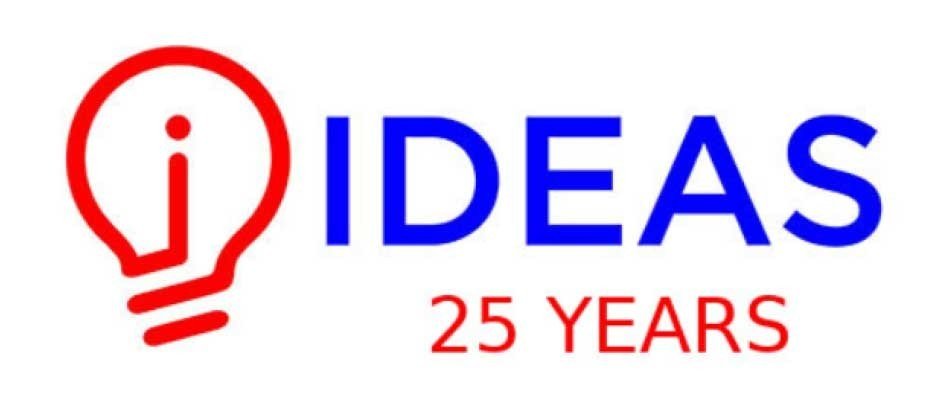| ISSN | 2615-9813 |
| ISSN (số cũ) | 1859-3682 |
Số 230 | Tháng 5/2025
Phân tích ảnh hưởng của yếu tố trò chơi hóa và nhận thức rủi ro về quyền riêng tư đến ý định sử dụng của người dùng ngân hàng số tại Việt Nam
Đoàn Thanh Hà, Trần Việt Tâm
Tóm tắt:
Mục tiêu của nghiên cứu này nhằm khám phá ảnh hưởng của các yếu tố trò chơi hóa (GM), nhận thức quyền riêng tư đến ý định sử dụng ngân hàng số (NHS) của người dùng tại Việt Nam. Về mặt lý thuyết, các giả thuyết được phát triển dựa trên sự kết hợp mô hình chấp nhận công nghệ (TAM) ban đầu với những yếu tố GM, nhận thức rủi ro quyền riêng tư (PPR) và nhận thức giá trị (PV). Phương pháp PLS-SEM được sử dụng để tìm ra mối quan hệ giữa các yếu tố có ảnh hưởng đến việc người dùng chấp nhận sử dụng NHS tại Việt Nam với 615 kết quả khảo sát. Kết quả cho thấy yếu tố trò chơi có ảnh hưởng thuận chiều đến ý định sử dụng NHS, đồng thời PV đóng vai trò trung gian trong việc hình thành ý định sử dụng NHS của người dùng. Tuy nhiên, kết quả cũng cho thấy PPR không có tác động trực tiếp đến ý định sử dụng NHS. Nghiên cứu đóng góp lý thuyết và giá trị thực tiễn cho các nhà hoạch định chính sách về mức độ tác động của những yếu tố trong mô hình nghiên cứu. Những gợi ý cũng được đưa ra cho các nghiên cứu khác trong tương lai để tăng cường sự hiểu biết trong lĩnh vực NHS.
Tài liệu tham khảo:
- Abdennebi, H. B. (2023). M-banking adoption from the developing countries perspective: A mediated model. Digital Business, 100065. Doi: https://doi.org/10.1016/j.digbus.2023.100065.
- Alnemer, H. A. (2022). Determinants of digital banking adoption in the Kingdom of Saudi Arabia: A technology acceptance model approach. Digital Business, 2(2), 100037. Doi: https://doi.org/10.1016/j.digbus.2022.100037.
- Ananda, S., Devesh, S., & Al Lawati, A. M. (2020). What factors drive the adoption of digital banking? An empirical study from the perspective of Omani retail banking. Journal of Financial Services Marketing, 25(1-2), 14-24. Doi: https://doi.org/10.1057/s41264-020-00072-y.
- Baptista, G., & Oliveira, T. (2017). Why so serious? Gamification impact in the acceptance of mobile banking services. Internet Research, 27(1), 118-139. Doi: https://doi.org/10.1108/IntR-10-2015-0295.
- Bayuk, J., & Altobello, S. A. (2019). Can gamification improve financial behavior? The moderating role of app expertise. International Journal of Bank Marketing, 37(4), 951-975. Doi: https://doi.org/10.1108/IJBM-04-2018-0086.
- Çera, G., Pagria, I., Khan, K. A., & Muaremi, L. (2020). Mobile banking usage and gamification: the moderating effect of generational cohorts. Journal of Systems Information Technology People, 22(3), 243-263. Doi: https://doi.org/10.1108/JSIT-01-2020-0005.
- Chris, S. (2014). Digital Bank: Strategies to Launch or Become a Digital Bank: Marshall Cavendish International Pte Ltd.
- Ciunova-Shuleska, A., Palamidovska-Sterjadovska, N., & Prodanova, J. (2022). What drives m-banking clients to continue using m-banking services? Journal of Business Research, 139, 731-739. Doi: https://doi.org/10.1016/j.jbusres.2021.10.024.
- Cohen, J. (2013). Statistical Power Analysis for the Behavioral Sciences (2nd Edition ed.). New York: Academic press.
- Davis, F. D. (1989). Perceived usefulness, perceived ease of use, and user acceptance of information technology. MIS quarterly - International journal of man-machine studies, 319-340. Doi: https://doi.org/10.2307/249008.
- Drèze, J., & Stern, N. (1987). The theory of cost-benefit analysis. In Handbook of public economics (Vol. 2, pp. 909-989): Elsevier.
- Firmansyah, I. A., Yasirandi, R., & Utomo, R. G. (2022). The influence of efficacy, credibility, and normative pressure to M-banking adoption level in Indonesia. Procedia Computer Science, 197, 51-60. Doi: https://doi.org/10.1016/j.procs.2021.12.117.
- Fishbein, M., & Ajzen, I. (1975). Belief, attitude, intention, and behavior: An introduction to theory and research: Addison-Wesley.
- Fortes, N., & Rita, P. (2016). Privacy concerns and online purchasing behaviour: Towards an integrated model. European Research on Managemen Business Economics, 22(3), 167-176. Doi: https://doi.org/10.1016/j.iedeen.2016.04.002.
- Gómez-Barroso, J.-L., Feijóo, C., & Martínez-Martínez, I. (2018). Privacy calculus: Factors that influence the perception of benefit. Journal of Profesional de la Informacion, 27(2), 341-348. Doi: https://doi.org/10.3145/epi.2018.mar.12.
- Hair Jr, J. F., Hult, G. T. M., Ringle, C. M., & Sarstedt, M. (2021). A primer on partial least squares structural equation modeling (PLS-SEM): Sage publications.
- Hamouda, M. (2019). Omni-channel banking integration quality and perceived value as drivers of consumers’ satisfaction and loyalty. Journal of Enterprise Information Management, 32(4), 608-625. Doi: https://doi.org/10.1108/JEIM-12-2018-0279.
- Henseler, J., Ringle, C. M., & Sarstedt, M. (2015). A new criterion for assessing discriminant validity in variance-based structural equation modeling. Journal of the academy of marketing science, 43, 115-135. Doi: https://doi.org/10.1007/s11747-014-0403-8.
- Hernandez-Ortega, B., Aldas-Manzano, J., Ruiz-Mafe, C., & Sanz-Blas, S. (2017). Perceived value of advanced mobile messaging services: A cross-cultural comparison of Greek and Spanish users. Information Technology People, 30(2), 324-355. Doi: https://doi.org/10.1108/ITP-01-2014-0017.
- Hsu, C.-L., & Chen, M.-C. (2018). How does gamification improve user experience? An empirical investigation on the antecedences and consequences of user experience and its mediating role. Technological Forecasting Social Change, 132, 118-129. Doi: https://doi.org/10.1016/j.techfore.2018.01.023.
- Jabbar, A., Geebren, A., Hussain, Z., Dani, S., & Ul-Durar, S. (2023). Investigating individual privacy within CBDC: A privacy calculus perspective. Research in International Business Finance, 64, 101826. Doi: https://doi.org/10.1016/j.ribaf.2022.101826.
- Kaur, B., Kiran, S., Grima, S., & Rupeika-Apoga, R. (2021). Digital banking in Northern India: The risks on customer satisfaction. Risks, 9(11), 209. Doi: https://doi.org/10.3390/risks9110209.
- Keith, M. J., Thompson, S. C., Hale, J., Lowry, P. B., & Greer, C. (2013). Information disclosure on mobile devices: Re-examining privacy calculus with actual user behavior. International journal of human-computer studies, 71(12), 1163-1173. Doi: https://doi.org/10.1016/j.ijhcs.2013.08.016.
- Kim, H.-J., & Lee, J.-M. (2022). The barriers and drivers of postponers' adoption intention of mobile-only banks. International Journal of Mobile Communications, 20(3), 309-331. Doi: https://doi.org/10.1504/IJMC.2022.122610.
- Kim, H.-W., Chan, H. C., & Gupta, S. (2007). Value-based adoption of mobile internet: an empirical investigation. Decision support systems, 43(1), 111-126. Doi: https://doi.org/10.1016/j.dss.2005.05.009.
- Kumar, R., Sachan, A., & Kumar, R. (2020). The impact of service delivery system process and moderating effect of perceived value in internet banking adoption. Australasian Journal of Information Systems, 24. Doi: https://doi.org/10.3127/ajis.v24i0.1923.
- Le, V. P., Do, S. H., & Nguyen, H. N. L. (2022). A Study on the Factors Affecting Intention of Using Online Banking Services in Vietnam. Global Changes Sustainable Development in Asian Emerging Market Economies Vol. 1: Proceedings of EDESUS, 179-198. Doi: https://doi.org/10.1007/978-3-030-81435-9_14.
- Lin, K.-Y., Wang, Y.-T., & Huang, T. K. (2020). Exploring the antecedents of mobile payment service usage: Perspectives based on cost–benefit theory, perceived value, and social influences. Online Information Review, 44(1), 299-318. Doi: https://doi.org/10.1108/OIR-05-2018-0175.
- Marangunić, N., & Granić, A. (2015). Technology acceptance model: a literature review from 1986 to 2013. Universal access in the information society, 14, 81-95. Doi: https://doi.org/10.1007/s10209-014-0348-1.
- Okocha, F. O., & Awele Adibi, V. (2020). Mobile banking adoption by business executives in Nigeria. African Journal of Science, Technology, Innovation Development, 12(7), 847-854.
- Pham, L., Williamson, S., Mohebbi, C., Nguyen, B., & Nguyen, H. (2021). The mediating role of perceived value in the effect of multi-dimensional risk in mobile banking. In Research Anthology on Securing Mobile Technologies and Applications (pp. 717-744): IGI Global.
- Prodanova, J., Ciunova-Shuleska, A., & Palamidovska-Sterjadovska, N. (2019). Enriching m-banking perceived value to achieve reuse intention. Marketing Intelligence Planning, 37(6), 617-630. Doi: https://doi.org/10.1108/MIP-11-2018-0508.
- Rafique, H., Almagrabi, A. O., Shamim, A., Anwar, F., & Bashir, A. K. (2020). Investigating the acceptance of mobile library applications with an extended technology acceptance model (TAM). Journal of Computers Educational psychological measurement, 145, 103732. Doi: https://doi.org/10.1016/j.compedu.2019.103732.
- Rodrigues, L. F., Costa, C. J., & Oliveira, A. (2017). How does the web game design influence the behavior of e-banking users? Computers in human behavior, 74, 163-174. Doi: https://doi.org/10.1016/j.chb.2017.04.034.
- Shaw, N., & Sergueeva, K. (2019). The non-monetary benefits of mobile commerce: Extending UTAUT2 with perceived value. International journal of information management, 45, 44-55. Doi: https://doi.org/10.1016/j.ijinfomgt.2018.10.024.
- Shmueli, G., Sarstedt, M., Hair, J. F., Cheah, J.-H., Ting, H., Vaithilingam, S., & Ringle, C. M. (2019). Predictive model assessment in PLS-SEM: guidelines for using PLSpredict. European journal of marketing, 53(11), 2322-2347. Doi: https://doi.org/10.1108/EJM-02-2019-0189.
- Srivetbodee, S., & Igel, B. (2021). Digital technology adoption in agriculture: Success factors, obstacles and impact on corporate social responsibility performance in Thailand’s smart farming projects. Journal of Thammasat Review, 24(2), 149-170.
- Tobon, S., Ruiz-Alba, J. L., & García-Madariaga, J. (2020). Gamification and online consumer decisions: Is the game over? Decision Support Systems, 128, 113167. Doi: https://doi.org/10.1016/j.dss.2019.113167.
- Tran Le Na, N., & Hien, N. N. (2021). A study of user’s m-wallet usage behavior: The role of long-term orientation and perceived value. Cogent Business Management, 8(1), 1899468. Doi: https://doi.org/10.1080/23311975.2021.1899468.
- Van, H. N., Pham, L., Williamson, S., Chan, C.-Y., Thang, T. D., & Nam, V. X. (2021). Explaining intention to use mobile banking: Integrating perceived risk and trust into the technology acceptance model. International Journal of Applied Decision Sciences, 14(1), 55-80. Doi: https://doi.org/10.1504/IJADS.2021.112933.
- Venkatesh, V., & Davis, F. D. (2000). A theoretical extension of the technology acceptance model: Four longitudinal field studies. Management science - International journal of man-machine studies, 46(2), 186-204.
- Venkatesh, V., Thong, J. Y., & Xu, X. (2012). Consumer acceptance and use of information technology: extending the unified theory of acceptance and use of technology. 157-178. Doi: https://doi.org/10.2307/41410412.
- Xie, J., Ye, L., Huang, W., & Ye, M. (2021). Understanding FinTech platform adoption: impacts of perceived value and perceived risk. Journal of Theoretical Applied Electronic Commerce Research, 16(5), 1893-1911. Doi: https://doi.org/10.3390/jtaer16050106.
Analyzing the Impact of Gamification, Privacy Risk on Usage Intention of Digital Banking Users in Vietnam
Abstract:
Objective of this study explores the impact of gamification factors and privacy perception on digital banking users' intention. Hypotheses are developed based on the combination of the original technology acceptance model with gamification factors, privacy risk perception and value perception. PLS-SEM method is used to find the relationship between factors affecting users' acceptance of digital banking in Vietnam with 615 survey results. The results show that gamification factors have a positive impact on users' intention to use digital banking while value perception plays a mediating role in forming users' intentio. However, the results also show that privacy risk perception does not have a direct impact on users' intention. The study contributes to the theory and practical value for policy makers on the impact level of factors in the research model. Suggestions are also given for future research to enhance understanding in the digital banking field.







